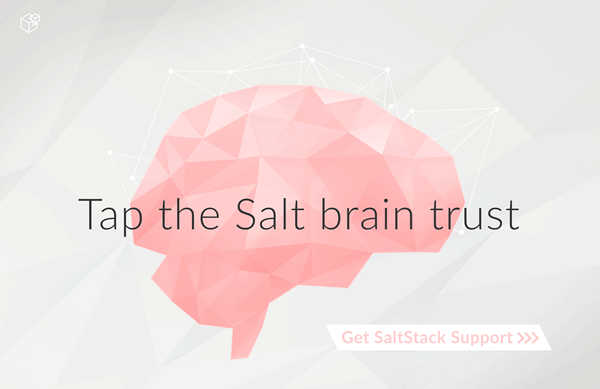Salt Cloud¶
Getting Started¶
Salt Cloud is built-in to Salt and is configured on and executed from your Salt Master.
Define a Profile¶
The first step is to add the credentials for your cloud provider. Credentials and provider settings are stored in provider configuration files. Provider configurations contain the details needed to connect, and any global options that you want set on your cloud minions (such as the location of your Salt Master).
On your Salt Master, browse to /etc/salt/cloud.providers.d/ and create a file called <provider>.provider.conf,
replacing <provider> with ec2, softlayer, and so on. The name helps you identify the contents, and is not
important as long as the file ends in .conf.
Next, browse to the Provider specifics and add any required settings for your provider to this file. Here is an example for Amazon EC2:
my-ec2:
provider: ec2
# Set the EC2 access credentials (see below)
#
id: 'HJGRYCILJLKJYG'
key: 'kdjgfsgm;woormgl/aserigjksjdhasdfgn'
# Make sure this key is owned by root with permissions 0400.
#
private_key: /etc/salt/my_test_key.pem
keyname: my_test_key
securitygroup: default
# Optional: Set up the location of the Salt Master
#
minion:
master: saltmaster.example.com
The required configuration varies between providers so make sure you read the provider specifics.
List Cloud Provider Options¶
You can now query the cloud provider you configured for available locations, images, and sizes. This information is used when you set up VM profiles.
salt-cloud --list-locations <provider_name> # my-ec2 in the previous example
salt-cloud --list-images <provider_name>
salt-cloud --list-sizes <provider_name>
Replace <provider_name> with the name of the provider configuration you defined.
Create VM Profiles¶
On your Salt Master, browse to /etc/salt/cloud.profiles.d/ and create a file called <provider>.profiles.conf,
replacing <provider> with ec2, softlayer, and so on. The file must end in .conf.
You can now add any custom profiles you'd like to define to this file. Here are a few examples:
micro_ec2:
provider: my-ec2
image: ami-d514f291
size: t1.micro
medium_ec2:
provider: my-ec2
image: ami-d514f291
size: m3.medium
large_ec2:
provider: my-ec2
image: ami-d514f291
size: m3.large
Notice that the provider in our profile matches the provider name that we defined? That is how Salt Cloud
knows how to connect to create a VM with these attributes.
Create VMs¶
VMs are created by calling salt-cloud with the following options:
salt-cloud -p <profile> <name1> <name2> ...
For example:
salt-cloud -p micro_ec2 minion1 minion2
Using Salt Cloud¶
Core Configuration¶
Windows Configuration¶
Cloud Provider Specifics¶
- Getting Started With Aliyun
- Getting Started With Azure
- Getting Started With DigitalOcean
- Getting Started With EC2
- Dependencies
- Configuration
- Access Credentials
- Windows Deploy Timeouts
- Key Pairs
- Security Groups
- IAM Profile
- Cloud Profiles
- Required Settings
- Optional Settings
- Modify EC2 Tags
- Rename EC2 Instances
- EC2 Termination Protection
- Rename on Destroy
- Listing Images
- EC2 Images
- show_image
- show_instance
- ebs_optimized
- del_root_vol_on_destroy
- del_all_vols_on_destroy
- EC2 Termination Protection
- Alternate Endpoint
- Volume Management
- Managing Key Pairs
- Launching instances into a VPC
- Getting Started With GoGrid
- Getting Started With Google Compute Engine
- Getting Started With HP Cloud
- Getting Started With Joyent
- Getting Started With LXC
- Getting Started With Linode
- Getting Started With OpenStack
- Getting Started With Parallels
- Getting Started With Proxmox
- Getting Started With Rackspace
- Getting Started With Saltify
- Getting Started With SoftLayer
- Getting Started With Vexxhost
- Getting Started With vSphere
Miscellaneous Options¶
Troubleshooting Steps¶
Extending Salt Cloud¶
- Adding Cloud Providers
- All Modules
- Libcloud Based Modules
- Non-Libcloud Based Modules
- The
create()Function - The get_size() Function
- The get_image() Function
- The avail_locations() Function
- The avail_images() Function
- The avail_sizes() Function
- The script() Function
- The destroy() Function
- The list_nodes() Function
- The list_nodes_full() Function
- The list_nodes_select() Function
- The show_instance() Function
- The
- Actions and Functions
- Adding OS Support


